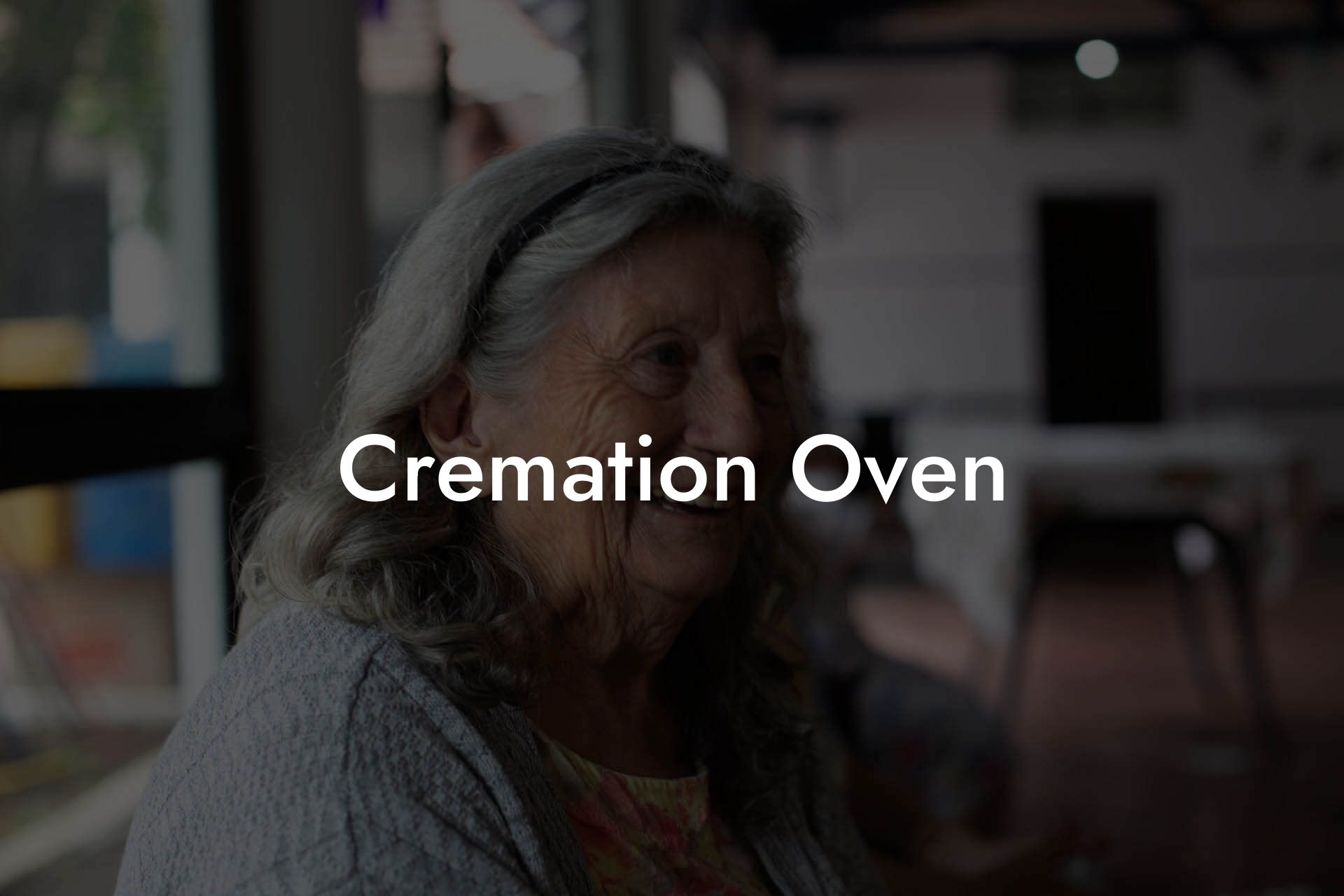Imagine a world where the process of saying goodbye to a loved one is not only dignified but also environmentally conscious. Welcome to the world of cremation, where the traditional funeral industry is being transformed by innovative technologies and eco-friendly practices. In this comprehensive guide, we'll delve into the world of cremation ovens, exploring the benefits, types, and future of this rapidly evolving industry.
Quick Links to Useful Sections
What is a Cremation Oven?
A cremation oven, also known as a cremator or retort, is a machine designed to cremate human remains at extremely high temperatures. The process typically takes around 2-3 hours, depending on the type of oven and the individual's body composition. The resulting ashes, or cremated remains, are then returned to the family for memorialization or scattering.
Modern cremation ovens are designed with efficiency, safety, and environmental sustainability in mind. They use advanced filtration systems to minimize emissions and reduce the carbon footprint of the cremation process.
Types of Cremation Ovens
There are several types of cremation ovens, each with its own unique features and benefits:
- Gas-powered ovens: These are the most common type, using natural gas or propane to fuel the cremation process.
- Electric ovens: These ovens use electricity to heat the cremation chamber, offering a more environmentally friendly option.
- Alkaline hydrolysis ovens: Also known as "water cremation," this process uses a solution of water and alkali to break down the body, producing a more eco-friendly and gentle alternative to traditional cremation.
Each type of oven has its own advantages and disadvantages, and the choice often depends on the funeral home or crematorium's specific needs and goals.
The Benefits of Cremation Ovens
Cremation ovens offer several benefits, including:
- Environmental sustainability: Cremation is a more eco-friendly option than traditional burial, requiring less land and resources.
- Cost-effectiveness: Cremation is often less expensive than traditional burial, making it a more accessible option for many families.
- Increased flexibility: Cremation allows for a wider range of memorialization options, including scattering, burial, or keeping the ashes in an urn.
As the funeral industry continues to evolve, cremation ovens are playing a critical role in shaping the future of death care.
The Future of Cremation Ovens
The cremation industry is rapidly evolving, driven by advances in technology and changing consumer preferences. Some of the trends shaping the future of cremation ovens include:
- Sustainability: The development of more eco-friendly cremation ovens, using alternative fuels and minimizing emissions.
- Personalization: The integration of personalized elements, such as customized urns and memorialization options, to honor the deceased.
- Digitalization: The use of digital technology to streamline the cremation process, improve efficiency, and enhance the overall experience for families.
As the industry continues to innovate, cremation ovens will play a vital role in shaping the future of death care and providing meaningful ways to honor our loved ones.
Resources and Community Support: Your Next Steps
If you're considering cremation for yourself or a loved one, it's essential to have access to the right resources and support. Here are some next steps:
- Research local crematoriums: Find a reputable crematorium in your area, and ask about their cremation ovens and processes.
- Explore memorialization options: Consider the various ways to honor your loved one, such as scattering, burial, or keeping the ashes in an urn.
- Seek support: Reach out to a grief counselor, support group, or online community to connect with others who have experienced loss.
Remember, the cremation process is a personal and emotional journey. By understanding the role of cremation ovens and the options available, you can make informed decisions and find meaningful ways to celebrate the life of your loved one.
Frequently Asked Questions
Here are some frequently asked questions about cremation ovens:
1. How does a cremation oven work?
A cremation oven uses high temperatures to break down the body, reducing it to ashes.
2. Is cremation environmentally friendly?
Yes, cremation is a more eco-friendly option than traditional burial, requiring less land and resources.
3. Can I witness the cremation process?
Yes, many crematoriums offer the option to witness the cremation process, providing a sense of closure and finality.
4. How long does the cremation process take?
The cremation process typically takes around 2-3 hours, depending on the type of oven and the individual's body composition.
5. What happens to the ashes after cremation?
The ashes are returned to the family, who can then choose to scatter, bury, or keep them in an urn.

